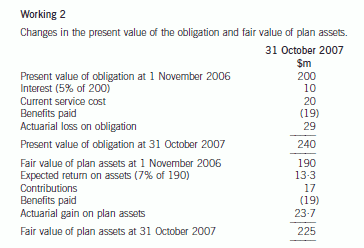ACCA证书含金量到底有多高?
发布时间:2019-07-20
2019年ACCA上半年考试已经结束,下半年考试正式计进入备考期,很多小伙在刚经历完上班年的考的,马上又要进入下半年新一轮的备考,这中间的疲惫相信很多正在备考或者已经考过的人都感同身受,很多考生会在这个阶段质疑说ACCA含金量真的有这么高吗?ACCA证书对求职就业、出国留学、未来发展有什么帮助吗?大这样努力考取这个证书真的是否有意义了?为此小编特地整理了如下内容。
一、ACCA的含金量
ACCA在通关部分科目后,可以申请英国OBU的学士学位和UOL的硕士学位,可以为自己的简历镀金,如果有想要出国留学或者工作都是有一定帮助的,获得学位后,还可以直接申请英联邦国家的硕博研究生。
ACCA在全球有180多个国家认可,被称为国际财会界的"通行证"。现拥有7,200家认可雇主,在中国有近千家签约就业企业,主要为四大会计师事务所、跨国银行、世界500强企业和国际国内大型知名企业。
据ACCA年度薪资调查报告显示,应届生通关ACCA后最低年薪基本不会低于15万。ACCA会员年薪达到30万至50万人民币之间比例高达52%,ACCA会员收入在50万至100万人民币之间比例高达21%,受访会员最高年薪超过200万人民币。
二、ACCA考试优势
ACCA考试周期短:
报名时间分为4个考季,3/6/9/12月,一年可以考4次。
ACCA报考条件低:
1、门槛不高,报考并无专业限制
2、大专学历即可报名
3、在校期间即可参加考试,毕业就拿证
4、无财会背景人士通过学习均可以通过
无论你是财会专业还是非财会专业,如果你想在财会行业有好的发展前景,就去考一个能够带你达到高起点、高薪资,真正有用的“万能通行证”。
三、ACCA就业前景
那考下ACCA之后,能去哪些企业~
1.四大会计师事务所
这个毫无疑问,ACCA这张素有“四大通行证”之称的证书,可谓是通往财会行业权威——四大的绝对加分项。但是,ACCAer可不止四大这一个选择哦~
2.国内会计师事务所
虽然,国际四大一直是财会人心中的圣地,但是近几年来,国内事务所的发展迅猛,收入和排名也随之发生了翻天覆地的变化。今年,身为本土八大的致同挤进前四!拿下ACCA,八大的面试官也会对你青睐有加。
3.投资银行
除了高盛、摩根大通、汇丰这些在国际上赫赫有名的国际银行外,国内的四大银行,也能给ACCA持证人们提供一个很好的施展平台。
4.金融机构
都说,金融、财会不分家,在ACCA的学习大军中,也不乏在金融领域打拼多年的从业者。因为金融工作中涉及到的财务报表、IPO估值等都需要用到财会的内容,所以ACCA可以说是对口证书。
5.500强外企
毫无疑问,ACCA这张起源于英国,适用国际会计准则的高端证书,绝对可以称得上是通往外企的“黄金文凭”。
综合以上就是对于上述ACCA问题的解答了,希望对于各位小伙伴有帮助,小编将持续更新相关内容。
下面小编为大家准备了 ACCA考试 的相关考题,供大家学习参考。
(ii) equipment used in the manufacture of Bachas Blue; and (4 marks)
(ii) Equipment used in the manufacture of Bachas Blue
Tutorial note: In the context of GVF, the principal issue to be addressed is whether or not the impairment loss previously
recognised should be reversed (by considering the determination of value in use). Marks will also be awarded for
consideration of depreciation, additions etc made specific to this equipment.
■ Agree cost less accumulated depreciation and impairment losses at the beginning of the year to prior year working
papers (and/or last year’s published financial statements).
■ Recalculate the current year depreciation charge based on the carrying amount (as reduced by the impairment
loss).
■ Calculate the carrying amount of the equipment as at 30 September 2005 without deduction of the impairment
loss.
Tutorial note: The equipment cannot be written back up to above this amount (IAS 36 ‘Impairment of Assets’).
■ Agree management’s schedule of future cash flows estimated to be attributable to the equipment for a period of up
to five years (unless a longer period can be justified) to approved budgets and forecasts.
■ Recalculate:
– on a sample basis, the make up of the cash flows included in the forecast;
– GVF’s weighted average cost of capital.
■ Review production records and sales orders for the year, as compared with the prior period, to confirm a ‘steady
increase’.
■ Compare sales volume at 30 September 2005 with the pre-‘scare’ level to assess how much of the previously
recognised impairment loss it would be prudent to write back (if any).
■ Scrutinize sales orders in the post balance sheet event period. Sales of such produce can be very volatile and
another ‘incident’ could have sales plummeting again – in which case the impairment loss should not be reversed.
(c) Identify and discuss the ethical and professional matters raised at the inventory count of LA Shots Co.
(6 marks)
(c) There are several ethical and professional issues raised in relation to the inventory count of LA Shots Co.
Firstly, it was inappropriate of Brenda Mangle to offer the incentive to the audit juniors. As she is a new manager, it may be
that she didn’t realise how the incentive would be perceived. Brenda should be informed that her actions could have serious
implications.
The offer could be viewed as a bribe of the audit juniors, and could be perceived as a self-interest independence threat as
there is a financial benefit offered to members of the audit team.
The value of the ten bottles of ‘Super Juice’ should be considered, as it is only appropriate for a member of the audit team to
accept any goods or hospitality from the audit client if the value is ‘clearly insignificant’. Ultimately it would be the decision
of the audit partner as to whether the value is clearly insignificant. It is likely that this does not constitute a significant threat
to independence, however the offer should still be referred to the audit partner.
Also, if the juniors took ten bottles of ‘Super Juice’, this could interfere with the physical count of goods and/or with cut off
details obtained at the count. The juniors should therefore have declined the offer and informed a senior member of the audit
team of the situation.
There may be a need to adequately train new members of staff on ethical matters if the juniors were unsure of how to react
to the offer.
The work performed by the juniors at the inventory count must be reviewed. The audit procedures were performed very
quickly compared to last year and therefore sufficient evidence may not have been gathered. In an extreme situation the whole
inventory count may have to be reperformed if it is found that the procedures performed cannot be relied upon.
In addition, the juniors should not have attended the audit client’s office party without the permission of the audit manager.
The party appears to have taken place during work time, when the juniors should have been completing the inventory count
procedures. The two juniors have not acted with due professional consideration, and could be considered to lack integrity.
The actions of the juniors should be discussed with them, possibly with a view to disciplinary action.
There may also be questions over whether the direction and supervision of the juniors was adequate. As the two juniors are
both recent recruits, this is likely to be the first inventory count that they have attended. It appears that they may not have
been adequately briefed as to the importance of the inventory count as a source of audit evidence, or that they have
disregarded any such briefing that was provided to them. In either case possibly a more senior auditor should have
accompanied them to the inventory count and supervised their actions.
3 Susan Paullaos was recently appointed as a non-executive member of the internal audit committee of Gluck and
Goodman, a public listed company producing complex engineering products. Barney Chester, the executive finance
director who chairs the committee, has always viewed the purpose of internal audit as primarily financial in nature
and as long as financial controls are seen to be fully in place, he is less concerned with other aspects of internal
control. When Susan asked about operational controls in the production facility Barney said that these were not the
concern of the internal audit committee. This, he said, was because as long as the accounting systems and financial
controls were fully functional, all other systems may be assumed to be working correctly.
Susan, however, was concerned with the operational and quality controls in the production facility. She spoke to
production director Aaron Hardanger, and asked if he would be prepared to produce regular reports for the internal
audit committee on levels of specification compliance and other control issues. Mr Hardanger said that the internal
audit committee had always trusted him because his reputation as a manager was very good. He said that he had
never been asked to provide compliance evidence to the internal audit committee and saw no reason as to why he
should start doing so now.
At board level, the non-executive chairman, George Allejandra, said that he only instituted the internal audit committee
in the first place in order to be seen to be in compliance with the stock market’s requirement that Gluck and Goodman
should have one. He believed that internal audit committees didn’t add materially to the company. They were, he
believed, one of those ‘outrageous demands’ that regulatory authorities made without considering the consequences
in smaller companies nor the individual needs of different companies. He also complained about the need to have an
internal auditor. He said that Gluck and Goodman used to have a full time internal auditor but when he left a year
ago, he wasn’t replaced. The audit committee didn’t feel it needed an internal auditor because Barney Chester believed
that only financial control information was important and he could get that information from his management
accountant.
Susan asked Mr Allejandra if he recognised that the company was exposing itself to increased market risks by failing
to have an effective audit committee. Mr Allejandra said he didn’t know what a market risk was.
Required:
(a) Internal control and audit are considered to be important parts of sound corporate governance.
(i) Describe FIVE general objectives of internal control. (5 marks)
3 (a) (i) FIVE general objectives of internal control
An internal control system comprises the whole network of systems established in an organisation to provide reasonable
assurance that organisational objectives will be achieved.
Specifically, the general objectives of internal control are as follows:
To ensure the orderly and efficient conduct of business in respect of systems being in place and fully implemented.
Controls mean that business processes and transactions take place without disruption with less risk or disturbance and
this, in turn, adds value and creates shareholder value.
To safeguard the assets of the business. Assets include tangibles and intangibles, and controls are necessary to ensure
they are optimally utilised and protected from misuse, fraud, misappropriation or theft.
To prevent and detect fraud. Controls are necessary to show up any operational or financial disagreements that might
be the result of theft or fraud. This might include off-balance sheet financing or the use of unauthorised accounting
policies, inventory controls, use of company property and similar.
To ensure the completeness and accuracy of accounting records. Ensuring that all accounting transactions are fully and
accurately recorded, that assets and liabilities are correctly identified and valued, and that all costs and revenues can be
fully accounted for.
To ensure the timely preparation of financial information which applies to statutory reporting (of year end accounts, for
example) and also management accounts, if appropriate, for the facilitation of effective management decision-making.
[Tutorial note: candidates may address these general objectives using different wordings based on analyses of different
study manuals. Allow latitude]
(b) (i) Discusses the principles involved in accounting for claims made under the above warranty provision.
(6 marks)
(ii) Shows the accounting treatment for the above warranty provision under IAS37 ‘Provisions, Contingent
Liabilities and Contingent Assets’ for the year ended 31 October 2007. (3 marks)
Appropriateness of the format and presentation of the report and communication of advice. (2 marks)
(b) Provisions – IAS37
An entity must recognise a provision under IAS37 if, and only if:
(a) a present obligation (legal or constructive) has arisen as a result of a past event (the obligating event)
(b) it is probable (‘more likely than not’), that an outflow of resources embodying economic benefits will be required to settle
the obligation
(c) the amount can be estimated reliably
An obligating event is an event that creates a legal or constructive obligation and, therefore, results in an enterprise having
no realistic alternative but to settle the obligation. A constructive obligation arises if past practice creates a valid expectation
on the part of a third party. If it is more likely than not that no present obligation exists, the enterprise should disclose a
contingent liability, unless the possibility of an outflow of resources is remote.
The amount recognised as a provision should be the best estimate of the expenditure required to settle the present obligation
at the balance sheet date, that is, the amount that an enterprise would rationally pay to settle the obligation at the balance
sheet date or to transfer it to a third party. This means provisions for large populations of events such as warranties, are
measured at a probability weighted expected value. In reaching its best estimate, the entity should take into account the risks
and uncertainties that surround the underlying events.
Expected cash outflows should be discounted to their present values, where the effect of the time value of money is material
using a risk adjusted rate (it should not reflect risks for which future cash flows have been adjusted). If some or all of the
expenditure required to settle a provision is expected to be reimbursed by another party, the reimbursement should be
recognised as a separate asset when, and only when, it is virtually certain that reimbursement will be received if the entity
settles the obligation. The amount recognised should not exceed the amount of the provision. In measuring a provision future
events should be considered. The provision for the warranty claim will be determined by using the expected value method.
The past event which causes the obligation is the initial sale of the product with the warranty given at that time. It would be
appropriate for the company to make a provision for the Year 1 warranty of $280,000 and Year 2 warranty of $350,000,
which represents the best estimate of the obligation (see Appendix 2). Only if the insurance company have validated the
counter claim will Macaljoy be able to recognise the asset and income. Recovery has to be virtually certain. If it is virtually
certain, then Macaljoy may be able to recognise the asset. Generally contingent assets are never recognised, but disclosed
where an inflow of economic benefits is probable.
The company could discount the provision if it was considered that the time value of money was material. The majority of
provisions will reverse in the short term (within two years) and, therefore, the effects of discounting are likely to be immaterial.
In this case, using the risk adjusted rate (IAS37), the provision would be reduced to $269,000 in Year 1 and $323,000 in
Year 2. The company will have to determine whether this is material.
Appendix 1
The accounting for the defined benefit plan is as follows:



声明:本文内容由互联网用户自发贡献自行上传,本网站不拥有所有权,未作人工编辑处理,也不承担相关法律责任。如果您发现有涉嫌版权的内容,欢迎发送邮件至:contact@51tk.com 进行举报,并提供相关证据,工作人员会在5个工作日内联系你,一经查实,本站将立刻删除涉嫌侵权内容。
- 2020-02-29
- 2019-07-20
- 2019-07-20
- 2019-07-20
- 2020-09-04
- 2019-07-20
- 2021-02-25
- 2020-03-08
- 2021-08-12
- 2020-01-08
- 2019-07-20
- 2020-01-08
- 2020-01-08
- 2019-07-20
- 2019-07-20
- 2021-04-09
- 2019-07-20
- 2019-07-20
- 2021-05-23
- 2019-07-20
- 2020-01-08
- 2019-07-20
- 2019-07-20
- 2020-03-04
- 2020-01-08
- 2020-01-08
- 2020-01-08
- 2019-07-20
- 2019-07-20
- 2019-12-06